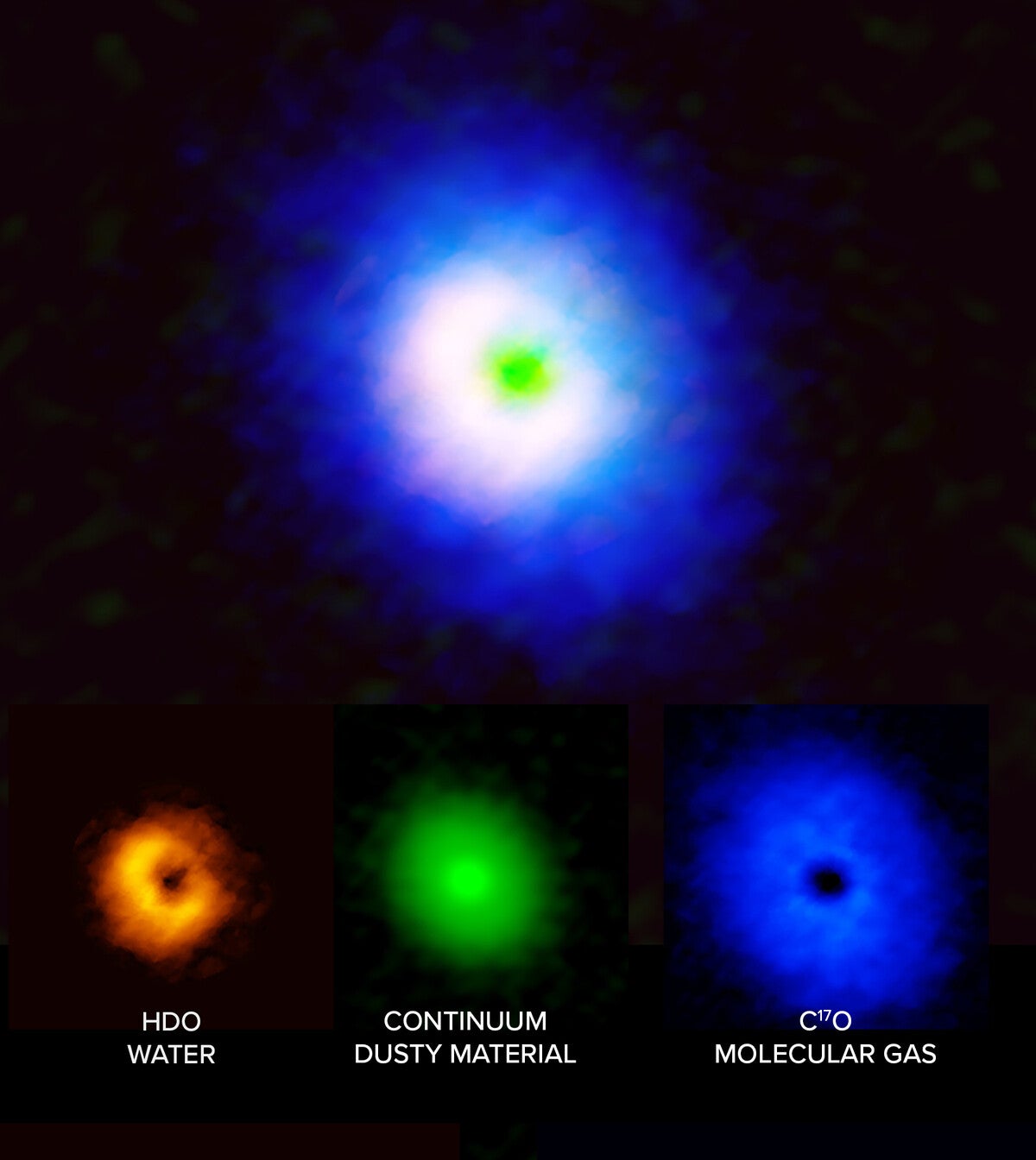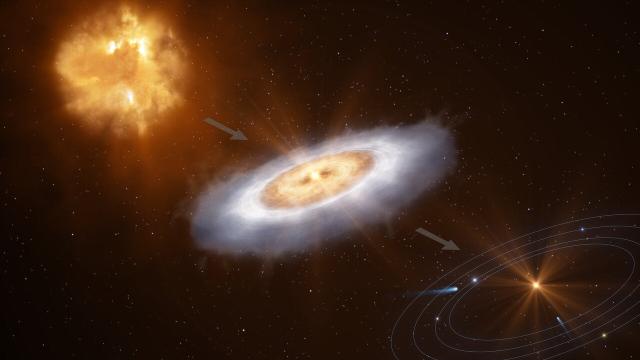Researchers studying a distant star forming within a dusty cloud have found an abundance of water in its immediate vicinity, which could have implications for the origins of the water in our own solar system.
The disc of material is called V883 Orionis, and it sits about 1,300 light-years away in the constellation Orion. It’s a protoplanetary disc, meaning that, eventually, planets will coalesce there; at the centre is a star being formed as it accretes material around itself.
The team of astronomers used the Atacama Large Millimetre/submillimeter Array (ALMA), a large radio telescope in Chile, to look for chemical signatures of water in the cloud. They found some. Their findings are published today in Nature.
“We’ve never been able to measure the composition of water in a protoplanetary disk before,” said John Tobin, an astronomer at the National Radio Astronomy Observatory and lead author of the new paper, in a phone call with Gizmodo.
“The measurement we made sort of fills the big gap in our knowledge of what happens between the protostar phase, when the star is first being created, versus comets, where that’s… sort of the leftovers of the planet formation process,” Tobin added.
V883 Orionis offers an example of what may have preceded our solar system. Scientists generally believe water arrived on Earth from comets, but those comets must’ve gotten their water from somewhere. Protoplanetary discs like V883 Orionis are filled with accreted dust and rock, as well as molecules locked away by the frigid temperatures of space.

“Most of the water in planet-forming discs is frozen out as ice, so it’s usually hidden from our view,’’ said co-author Margot Leemker, a researcher at Leiden Observatory in the Netherlands, in a European Southern Observatory release.
V883 Orionis made for a particularly good observational target because a recent outburst of energy from the star warmed the disc, causing water in the disc to jump from a solid state (ice) to its gaseous state (vapour), making it relatively easy for ALMA to spot it.
The team saw normal water — that is to say, H2O — but also heavy water, in which one of water’s hydrogen atoms is replaced by deuterium, a heavy isotope of hydrogen. “Now we can really trace the path of water more or less continuously back from water on Earth to comets, to the protoplanetary discs, to protostars, and then back to the interstellar medium,” Tobin said.
In total, the team found that V883 Orionis contains at least 1,200 times the water Earth has in all its oceans. The team intends to make further observations with the METIS instrument and the not-yet-built Extremely Large Telescope, to better see water in its gaseous state in such discs.
Life as we know it depends on water, so any discovery of the wet stuff out in the universe is an intriguing sign that life may exist elsewhere. A young system like V883 Orionis, though, is likely a few billion years away from intelligent aliens that could receive signals from Earth. Alas, we’ll surely be long gone by then.
More: Asteroids Really Could Have Brought Water to Earth, Experiment With Giant Rock Blaster Shows
